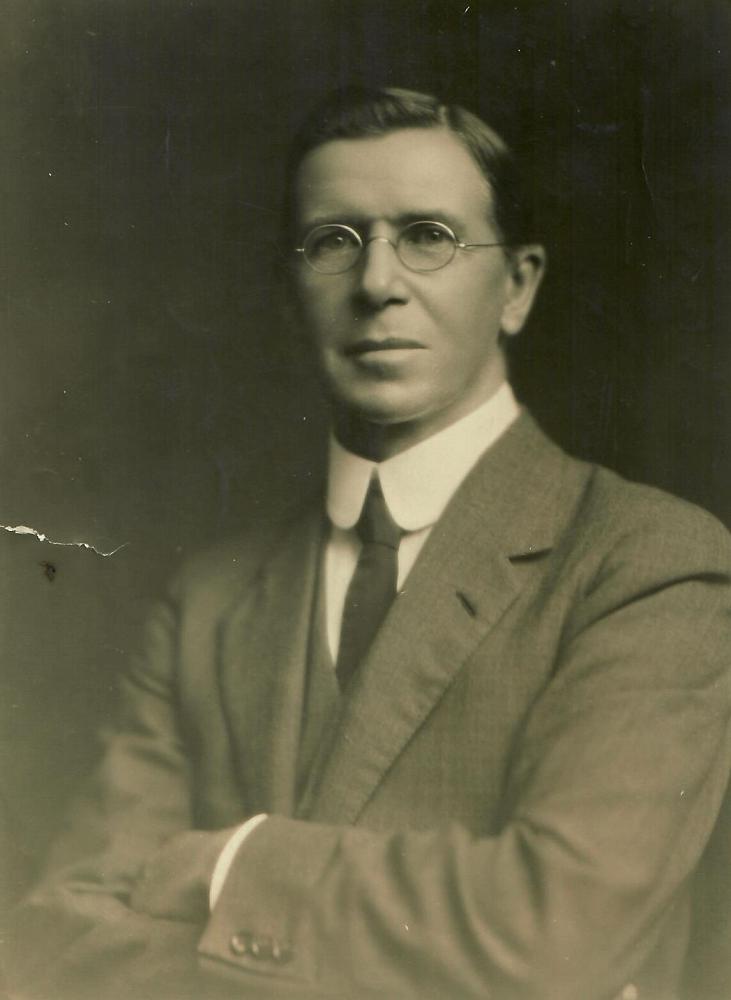
On the Edge of Society | Helena Goldie Hospital
In this series we have usually talked of ministers who have completed a long and notable career. Not so with Walter Hawes Dyer (1872-1905) who served two years at Dunstable in England, and then came to this country for health reasons. After a year at Tauranga he went to Wanaka, where he died. His life-long battle with consumption led to him spending some years at the famous Nordrach Sanatorium in Germany.
He must have come here in the hope that the sun and fresh sea air at Tauranga would help. It didn’t, although though his ministry led to the building of the first Methodist Church there. Central Otago had a better reputation, and he was able to find a place as a Presbyterian Home Missionary. He died just before the first new church there (the place was then named Pembroke) opened. He had spent most of his life, as was the case with people like him, on the edge of society.
Recently the lectionary brought us the story of Jesus and the 10 lepers. In those pre-scientific days and, indeed, until the 20th century, the only way to deal with scourge was to separate the sufferer from the rest of society. In Jesus’ homeland the leper was not abandoned – there was a sense of responsibility for these unfortunates, living apart, surviving on the charity of their neighbours.
Leprosy was something that the Methodist Church had to deal with when it commenced its missionary work in the Solomon Islands in 1922. Health issues were an immediate challenge, not just for John Goldie and his fellow-workers, but for Methodists back home in this country. The early appointment of nursing sisters reflected this, though they had to fit in with the primary task - the conversion of the native population. Sisters Lilian Berry and Elizabeth Common went with a sense of commitment, but no real facilities for their special work.
An earlier subject in this series was (Sir) Edward Sayers, the first medical doctor associated with the Mission. He did an extraordinary job in organising high quality medical services. That was not an easy task, since the erection of a hospital could not be done without careful planning, and the assurance of adequate funding and staffing. A preliminary start was made, but within a few years it was accepted that the hospital should be sited at the more accessible Bilua. By 1933 a set of new buildings had been provided and were called the Helena Goldie Hospital in acknowledgement of the contribution of the Superintendent’s wife.
When Dr Sayers returned to New Zealand his place was taken by Dr Allen Rutter, and the high quality medical work continued. Both were regarded as eminent in the field of tropical medicine, in which they had been thoroughly trained while studying in London. Both would have understood the nature of leprosy in terms of recognition, but its treatment was a long-term matter, not available within the Solomon Islands. From 1911 to 1969 people diagnosed with leprosy in the South Pacific were gradually isolated and received medical treatment at the Central Lepers' Hospital, Makogai Island, Fiji. This was owned by the colonial government of Fiji and operated with the help of the Missionary Sisters of the Society of Mary. Mother Mary Agnes was the superior of the leper colony from 1916 until 1950. The leper colony operated until the 1960s.
The number of patients grew from 40 when the leprosarium opened in 1911 to 700 in 1950. Until the discovery of sulfones in the 1940s leprosy was largely incurable and it was expected that those who went to the island would never return. Patients came from all the British Colonies of the Pacific and from New Zealand after 1922. Those not residing at the hospital lived in villages organised by ethnicity. Each community was allowed to keep their traditions and religious practices. As part of the therapy, they were expected to grow food, fish, do craft work or graze cattle. The leprosarium was renowned internationally as a model of discipline and social peace.
As Methodists we got to know about Makogai through the outstanding work of P.J. Twomey, a Roman Catholic layman. Known as the ‘Leper Man’ he was totally committed to financial aid for the leprosarium. Our own Church’s support for him and his appeals grew with the passing of the years.
If Jesus’ close neighbours were lepers, living just outside the borders of a village, what emerged in the South Pacific was symbolic of the vast distances between islands – not just towns and villages as in Israel. As long as leprosy was untreatable it was a threat and total isolation was justified. Now it is not, and leprosy has lost some of its notoriety. People who suffer, for whatever reason, need and deserve, our company.
